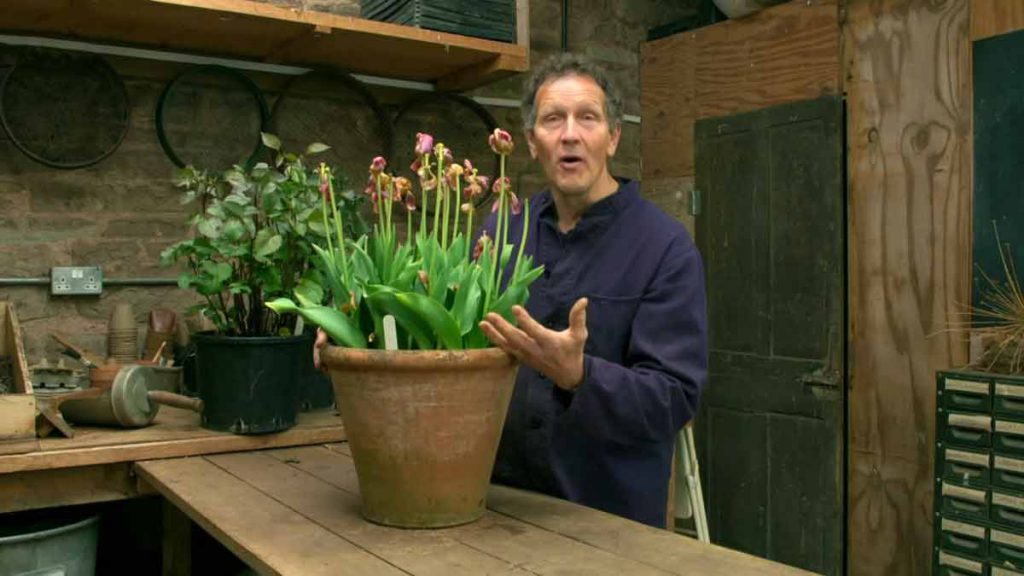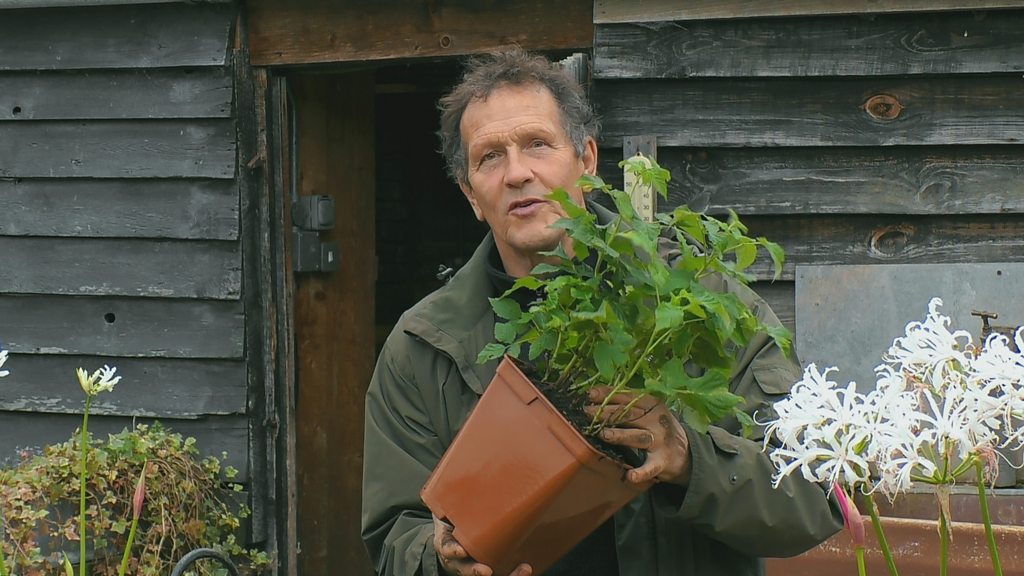Gardeners’ World Winter Specials 2021/22 episode 2: Adam Frost and the team celebrate the joy that the gardening year brings with a selection of brand new stories. Nick Bailey visits the winter garden at Sir Harold Hillier Gardens in Hampshire; Frances Tophill discovers the largest cultivated collection of Mediterranean plants in the great glasshouse at the National Botanic Garden of Wales; and Carol Klein immerses herself in the exuberance of high summer at Kelmarsh Hall Gardens in Northamptonshire.
Meanwhile, Arit Anderson meets a couple in the Pennines who have created a garden on the most challenging of plots, and Rachel de Thame shines a light on a plant that dazzles in the depths of winter – witch hazel. We visit an artist in County Wicklow, Ireland, who curates his garden like a living canvas, and we meet a passionate gardener in Wiltshire who has taken her love of tulips to a whole new level.
There is also a chance to see what viewers have been getting up to in their own gardens.
Gardeners’ World Winter Specials 2021/22 episode 2
Scented winter shrubs
That precious combination of colour and fragrance is all the more valuable in winter when we all need a lift, and there are some superb shrubs to remind us that winter is not all about endless rain or scraping ice off the car
Sarcococcas, sometimes known as sweet or Christmas box, are easy evergreens with glossy pointed foliage. The blooms of some, such as the white-flowered S. confusa, tend to be hidden amongst the leaves – but their scent is unmissable and often the first sign of flowering isthe scent wafting around the garden.
Finally, the indispensible witch hazels – Hamamelis. This is a case where choosing the right variety is crucial as while many are very brightly colourful, not all are scented. And a word of warning: H. × intermedia ‘Pallida’ is the best known and always recommended, and if you’re sold the right plant the colour and scent are marvellous. But there are impostors being sold under that name which have no scent, so either shop at a specialist, or choose another.
Exotic and subtropical gardening
Create the atmosphere of a lush subtropical oasis in your own garden using bold foliage and dazzling hot flower colours. Unlike a typical English garden, an exotic-style garden doesn’t have all-year-round interest, instead peaking in a mass of vegetation in summer. However, careful plant choice can extend the season a little into winter.
The typical characteristics of a subtropical garden scheme are exuberant plant with large leaves, structural forms and striking flower colours. This can be achieved in most garden situations providing the necessary conditions are met.
How to grow witch hazel
With flowers that light up even the gloomiest winter day, this easy-to-grow shrub likes a sunny spot. The small tassel-like blooms, in vivid yellow or fiery orange, are strung along the bare branches and waft their heady fragrance across the garden.
There is a range of species and cultivars of witch hazel so choose the colour, fragrance and ultimate size and spread most suitable for your garden. Look out for cultivars which performed well in RHS trials and have been awarded the RHS Award of Garden Merit (AGM).
Ideally choose an open, sunny position in the garden. Although witch hazels will tolerate partial shade, they become straggly in very shady sites. Witch hazels need free-draining soil that doesn’t dry out in summer (water if needed). A light soil with plenty of organic matter, such as well-rotted manure or compost, dug in is best.
They will grow on heavier clay soils that are also mproved by digging in organic matter, such as well-rotted garden compost or manure, and ensuring good drainage by planting on a slight mound, about 25-30cm (10in-1ft) high and 1m (3½ft) in diameter. Acid to neutral soil with a pH of between 4.5 and 6.5 is ideal. Witch hazels can tolerate deep soils over chalk where plenty of added organic matter has been dug in and used as a mulch, but they won’t tolerate shallow chalky soil.
Steep banks and slopes – Gardeners’ World Winter Specials 2021/22 episode 2
Few gardens are completely flat but steep banks and slopes pose a particular challenge for most gardeners. Planting them up with the right plants can be a great long term solution.
Thorough preparation and careful planting are particularly important, as soils on banks and steeper slopes are often poor and sandy. Remove all perennial weeds and add well-rotted manure or garden compost where possible.
A suitable soil test (RHS Soil Analysis Service) will help identify the soil texture and acidity or alkalinity which will influence the range of suitable plants. Acid-loving or ericaceous shrubs grow best in a pH range of 4-6, and ideally pH 5-5.5.
On steeper slopes coarse coconut matting or similar material can be pegged down so that the soil on the slope, temporarily cleared of vegetation, is less likely to wash off. Plant through the matting. As the matting decays, stem-rooting plants should root-in to provide good consolidation.
Make watering easier by planting individual plants on a small horizontal shelf of soil – this way the water won’t run straight off. Thoroughly water-in plants to settle the soil around the roots after planting. Apply a general fertiliser such as growmore (or in March following autumn planting), followed by a mulch if possible to help conserve moisture during the summer months. Keep a regular check on watering needs throughout the first growing season, including the winter months with evergreens.




